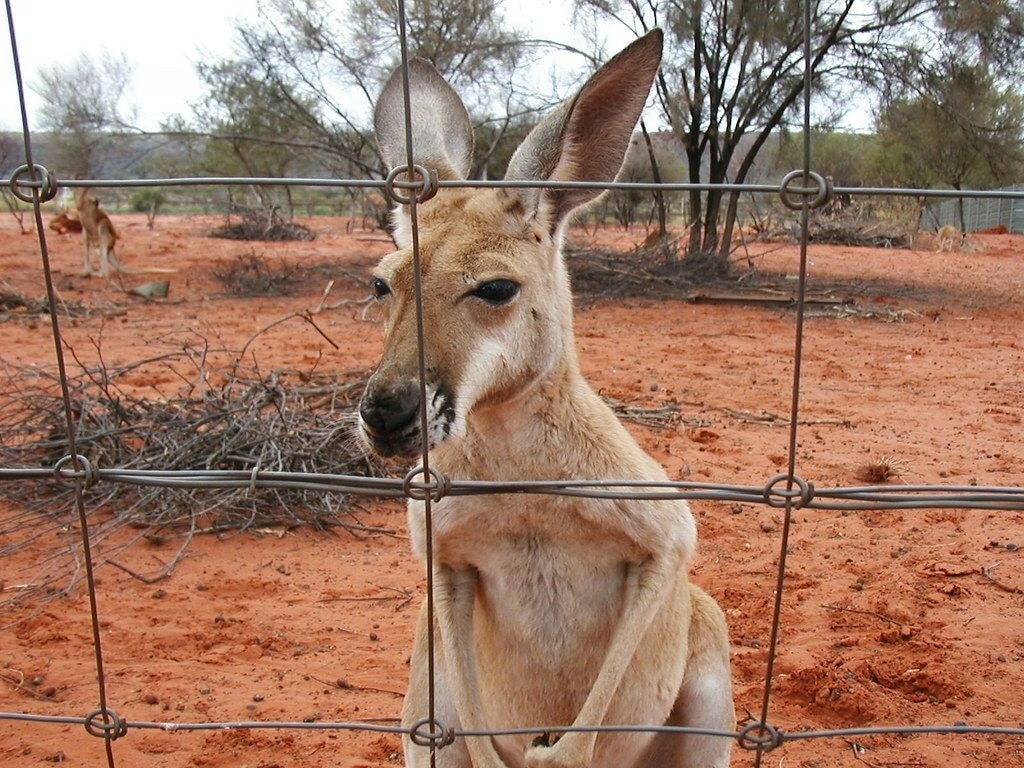
Flinders University researchers have shown young red kangaroos born north of the dingo fence grow much faster than those south of the fence, believing it could be a defensive adaptation for survival against dingoes.
The study led by Associate Professor Vera Weisbecker, with the Global Ecology labs from the Australian Research Council Centre of Excellence for Australian Biodiversity and Heritage, found that the dingo-proof fence impacts different aspects of the red kangaroo’s life cycle.
“Red kangaroos are one of the dingo’s favourite prey species, so we were not surprised to find fewer of the smaller females and younger animals when there are more dingoes around. However, we did not expect to see that, on average, young animals inside the fence were lighter and smaller than those outside the fence,” Prof Weisbecker said.
Data analyst Dr Rex Mitchell said that the faster growth rate of red kangaroos north of the fence could be a defensive adaptation for survival against dingoes preferring smaller red kangaroos.
“They certainly appear to escape the dangerous weight range more quickly than their protected cousins in the fence,” Dr Mitchell said.
Research co-author Dr Frédérik Saltré used satellite-based analyses to evaluate the impact of vegetation cover on these striking differences to ensure the difference in growth rate was not simply related to higher food availability outside the fence, but the results were also surprising.
“Counter-intuitively, we found less vegetation inside than outside the fence in the year of sampling. There might have been more food available to the slower-growing kangaroos inside the fence, meaning they were taking their time to grow up,” Dr Saltre said.
Co-author Prof Corey Bradshaw said the slower growth inside the fence could have some advantages for the animals.
“Having to put the whole body’s resources into growth, particularly when food is scarce, can mean that other areas of the body are compromised — an animal might be in poorer health or have fewer offspring, for example,” Prof Bradshaw said.
The research team said more studies should be made to find out how much the fence affects kangaroos and other prey species.
“The fence is a unique Australian megastructure and a huge predator-prey experiment. Examining how the fence modifies our native wildlife is important in the continuing debate over the efficiency and merits of the dingo-proof fence, not only relative to the dingo itself but also to the invasive species such as rabbits that the dingo eats,” the team said in their study that was published in the Journal of Mammalogy.






0 Comments